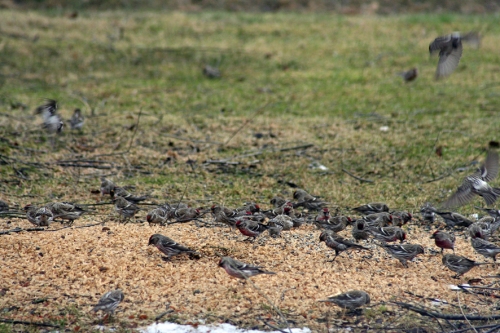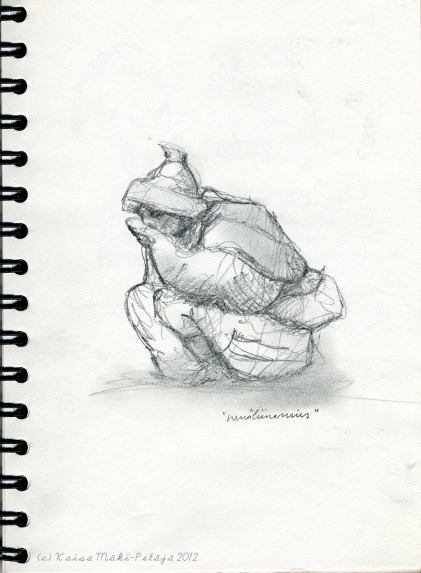Spring Invasion
April 21, 2012
Nature bird feeder, bird populations, Common redpoll, ecology 3 Comments
The Kleenex Man
April 12, 2012
Art art, Kleenex, Larry Niven, Superman 2 Comments
This one is about ten years old, but I still remember the moment I saw him in a tissue paper I had used to blow by nose. There he was, a stranger, sipping something from his palms; quiet, calm, untroubled. I’m not sure where he came from but for some reason I imagined a tough, rough place. A desert, perhaps, or some windswept mountain plains like the Tibetan Plateau.
I kept the used tissue for days because it felt too sad to just throw him away. He also reminds me of Larry Niven’s essay on Superman, ‘Man of Steel, Woman of Kleenex’. Yes, I freely admit it, I am sci-fi nerd.
This is not the North Pole
April 10, 2012
Weird or what? ice, nature, sea, seasons, soundscape, Venus Leave a comment
Yesterday we went to see the sea ice around the wee island of Ohtakari in Lohtaja. The sea ice had broken up and the wind and the waves had pushed it landward into pack ice. On the westward shoreline of Ohtakari it felt like being on the Arctic sea ice or at the North Pole. My brother had been there a few days ago and then the pack ice had been moving, but yesterday the sea was still and quiet. Too bad. It would have been nice to hear the sound of the ice, the creaks and the wailing, how the ice moans as the ice floats press against each other. Maybe we’ll catch that next year.
But we did get to hear the sea last Saturday. Then we were at the harbour in Himanka. There the sea ice was still fast ice though not safe enough to walk on anymore. The sun had just set and the western sky was in blaze. The stars appeared on the dark blue deepness, Venus being the brightest with Jupiter closer to the horizon. Occasionally the ice moaned and creaked when it moved along the rifts that run across it. But the more interesting, more haunting, and bizarre sound was the sound the sea itself made as it moved beneath the fast ice. It sounded like a massive bowels of a monstrous beast, bubbling and squelching in a low pitch. At first we didn’t realise it was the sea, but though that the sound came from the cooling systems of the storage buildings for the fish. It took a while before we were sure it was the sea and not the machinery. What a strange soundscape it was: the deep, unseen, belching sea under the wast silence of the stars. I could have stayed there for hours just listening for the next groan.



